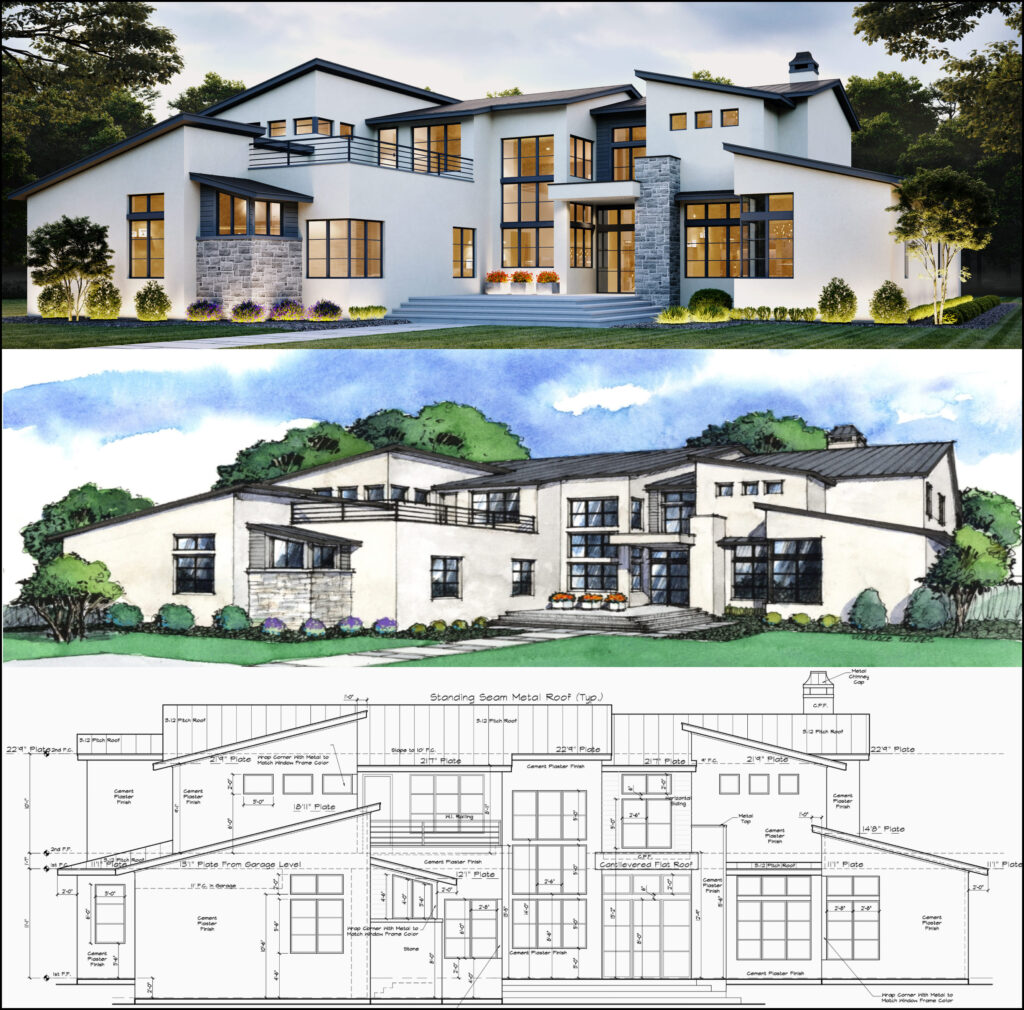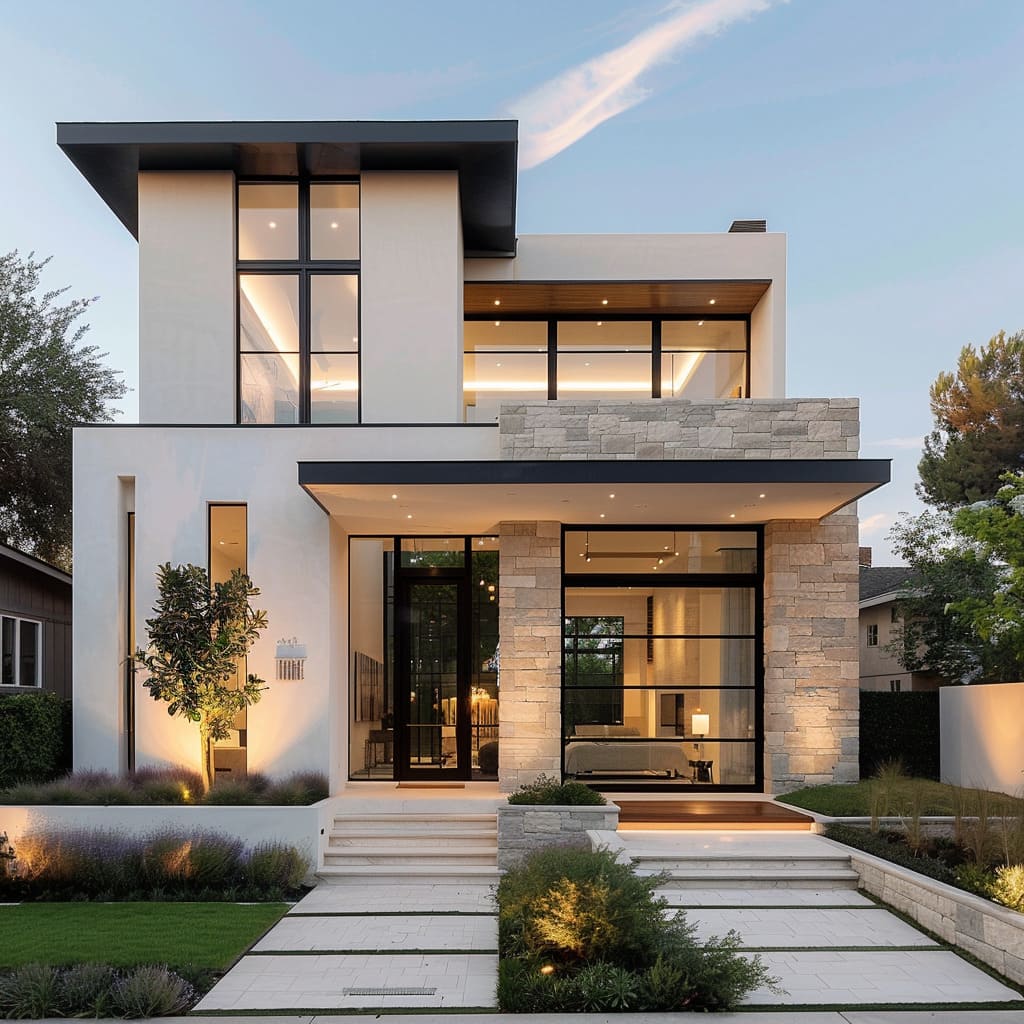Understanding the Collaborative Refine In Between Architects and Engineers in Modern Building And Construction Projects
The collective process in between engineers and engineers is necessary in modern-day building and construction projects, as it harmonizes style intent with design usefulness. This collaboration not just influences the aesthetic and practical elements of a job however also plays a crucial function in resolving sustainability obstacles. By using efficient communication techniques and leveraging sophisticated modern technologies, such as Structure Details Modeling (BIM), teams can work more cohesively. However, the complexities of this partnership commonly present unique difficulties that can hinder progression. Exploring these characteristics reveals insights that could significantly influence job end results and overall sector requirements.
The Relevance of Collaboration
The collaborative synergy between architects and engineers is necessary for the effective understanding of any type of building and construction job. This partnership brings with each other unique competence and perspectives, allowing the integration of ingenious layout with sensible engineering services. By interacting, architects and engineers can make sure that a project not just satisfies visual and functional demands however also complies with security, sustainability, and budgetary restrictions.
Cooperation promotes a common vision, promoting the alignment of goals and expectations from the start. This placement is crucial in resolving possible challenges and mitigating threats that might occur during the project lifecycle. Moreover, a collective technique permits the reliable allocation of sources, enhancing both time and price.
The significance of cooperation reaches the iterative process of design and building, where comments from designers can inform architectural decisions, bring about even more feasible and lasting designs. Conversely, designers can influence engineers to assume artistically concerning how to attain architectural stability without jeopardizing artistic intent. Ultimately, the joint partnership between architects and designers is not simply valuable; it is fundamental to the creation of high-quality, practical, and innovative constructed atmospheres that meet the requirements of society.
Interaction Strategies and Tools
Reliable communication strategies and tools are vital for fostering cooperation between designers and engineers throughout the project lifecycle. Establishing clear networks of communication is important to make certain that all group members are lined up with task objectives, timelines, and obligations. Regular meetings, both in-person and digital, provide opportunities for stakeholders to discuss progress, address worries, and make educated decisions.
Making use of task administration software application, such as BIM (Building Info Modeling) platforms, improves partnership by enabling real-time sharing of style modifications and technological specifications. These tools assist in openness, permitting architects and designers to envision modifications and examine their effect on the general job.

Shared Goals and Project Vision

Establishing common goals entails open discussion and a comprehensive understanding of each technique's contributions. Architects generally focus on design intent, spatial relationships, and customer experience, while designers emphasize structural integrity, systems performance, and compliance with guidelines (cda architects). When these viewpoints are straightened, the result is a cohesive task that follows both innovative ambitions and technical feasibility
Additionally, a well-defined job vision fosters liability amongst employee, urging each participant to take possession of their function in accomplishing the wanted outcome. Regular check-ins and collaborative workshops can even more reinforce this commitment, permitting changes to be helpful hints made as the task develops. Eventually, a common vision not just boosts team effort but additionally elevates the quality of the final deliverable, bring about effective project completion.
The Role of Innovation
Leveraging technology has actually become essential in boosting partnership in between engineers and engineers. Structure Information Modeling (BIM) stands out as a crucial technology, allowing both architects and designers to develop thorough 3D designs that encapsulate design intent and structural integrity.
Additionally, cloud-based platforms enable seamless cooperation, allowing job stakeholders to access and update task data from anywhere. This promotes a society of openness and responsibility, as changes can be tracked and evaluated in real-time. In addition, mobile applications additional boost communication, giving on-site groups with prompt access to project specs and updates.
Emerging technologies such as expert system and maker understanding are likewise starting to play a duty in predictive analysis, helping teams recognize prospective concerns before they develop. Ultimately, the role of technology in architecture-engineering cooperation not just boosts process performances however likewise improves advancement, causing more successful job results. By find here accepting these technical improvements, designers and engineers can ensure an extra cohesive and productive collaborative process throughout the construction lifecycle.
Case Studies in Successful Collaborations
Numerous study highlight the extensive effect of reliable collaborations between designers and designers on task outcomes. One notable instance is the cooperation on the High Line in New York City, where landscape designers, designers, and metropolitan planners collaborated to transform a deserted railway into a vivid public park. This multidisciplinary technique not only enhanced the aesthetic top quality however likewise ensured structural security and ecological sustainability.
An additional excellent instance is the layout and building and construction of the Sydney Concert Hall. The partnership in between architect JÃ ¸ registered nurse Utzon and structural designer Ove Arup exemplified innovative problem-solving. Their cooperation enabled the legendary shell-like design while resolving intricate design obstacles, eventually causing a classic building work of art.
The Burj Khalifa in Dubai additionally demonstrates the importance of collective initiatives. cda architects. The combination of design and engineering knowledge allowed the task group to achieve unmatched elevations while adhering to safety and security guidelines and visual vision
These instances emphasize the significance of communication, trust fund, and shared objectives. In today's complicated building and construction environment, his response such partnerships are necessary to browsing obstacles and delivering projects that meet both functional and visionary goals.
Final Thought
In verdict, the partnership between architects and designers is necessary for the success of contemporary construction jobs. Efficient communication strategies, a shared project vision, and the combination of advanced modern technologies are important parts that facilitate this partnership.
Comments on “The Creative Process Behind Effective Projects from CDA Architects”